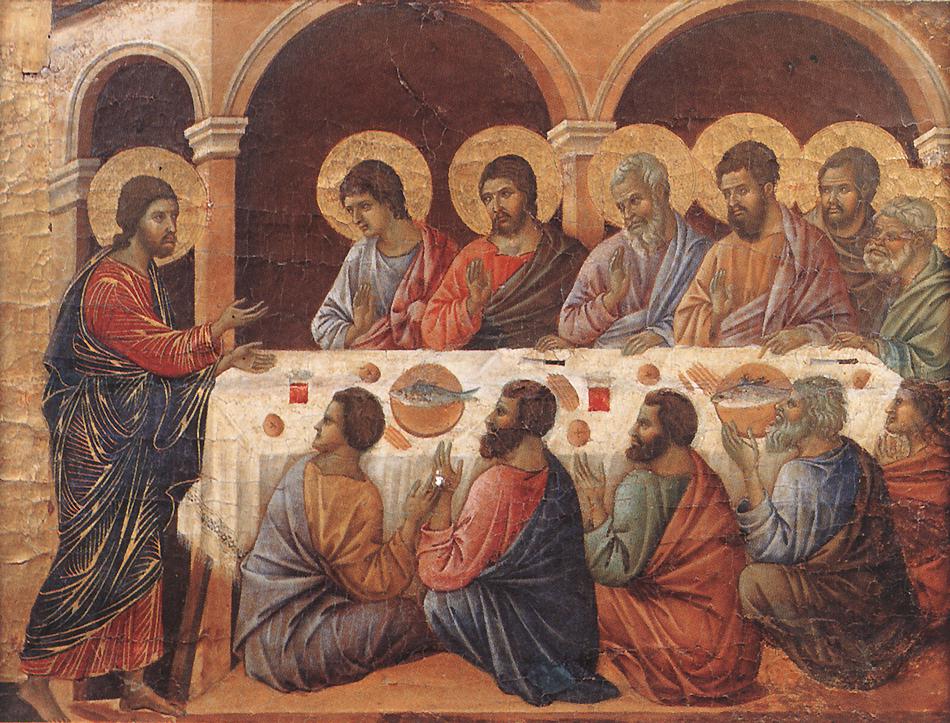Cantata 145 has something of a confusing history. Its only source is a copy from the early 19th century, and it came to us with two movements added at the beginning: a chorale by Bach, or possibly by his son Carl Philipp Emanuel, and a choral movement by Telemann. Most modern conductors choose to perform the cantata without these two additions, since keeping them would result in a very awkward structure.
The text of the original movements is by Picander, from a cycle of cantata librettos he published in 1728, which makes it highly probable that the cantata was first performed for Easter Tuesday, 1729. Like other cantatas of that year, it’s possible that Bach opened it with a sinfonia or concerto movement.
The readings of the day have to do with the resurrection of Christ and the fulfillment of the prophecies about his suffering and rising from the dead. The gospel is Luke 24: 36-47, which narrates the first appearance of Jesus to the apostles after his resurrection.
Picander’s text refers to these concepts without quoting the Bible directly. The first movement is a dialog for soprano and tenor, where the soprano represents the believer’s soul and the tenor, Jesus. The departure from Bach’s usual practice of assigning the voice of Jesus to a bass makes scholars suspect that the movement could have been parodied from a secular cantata from the Köthen period. The duet is accompanied by a solo violin and basso continuo.
Next, a tenor “secco” recitative and a bass aria talk in the second person to the believer’s heart, reminding it of the certainty of Jesus’ resurrection. The aria is lavishly scored for trumpet, flute, 2 oboes d’amore, 2 violins and continuo. Its lively tune and minuet-like rhythm reinforce the theory that it may have originated as part of a secular work.
The following movement is a soprano recitative which repeats twice the words “Mein Jesus lebt” (“My Jesus lives”). Its last 4 verses are a paraphrase of the Song of Simeon, starting with the verse “Ich habe (nun) genug” which opens one of Bach’s most famous cantatas (BWV 82).
The recitative leads to a closing chorale on an Easter hymn by Kikolaus Herman dating from 1560.
